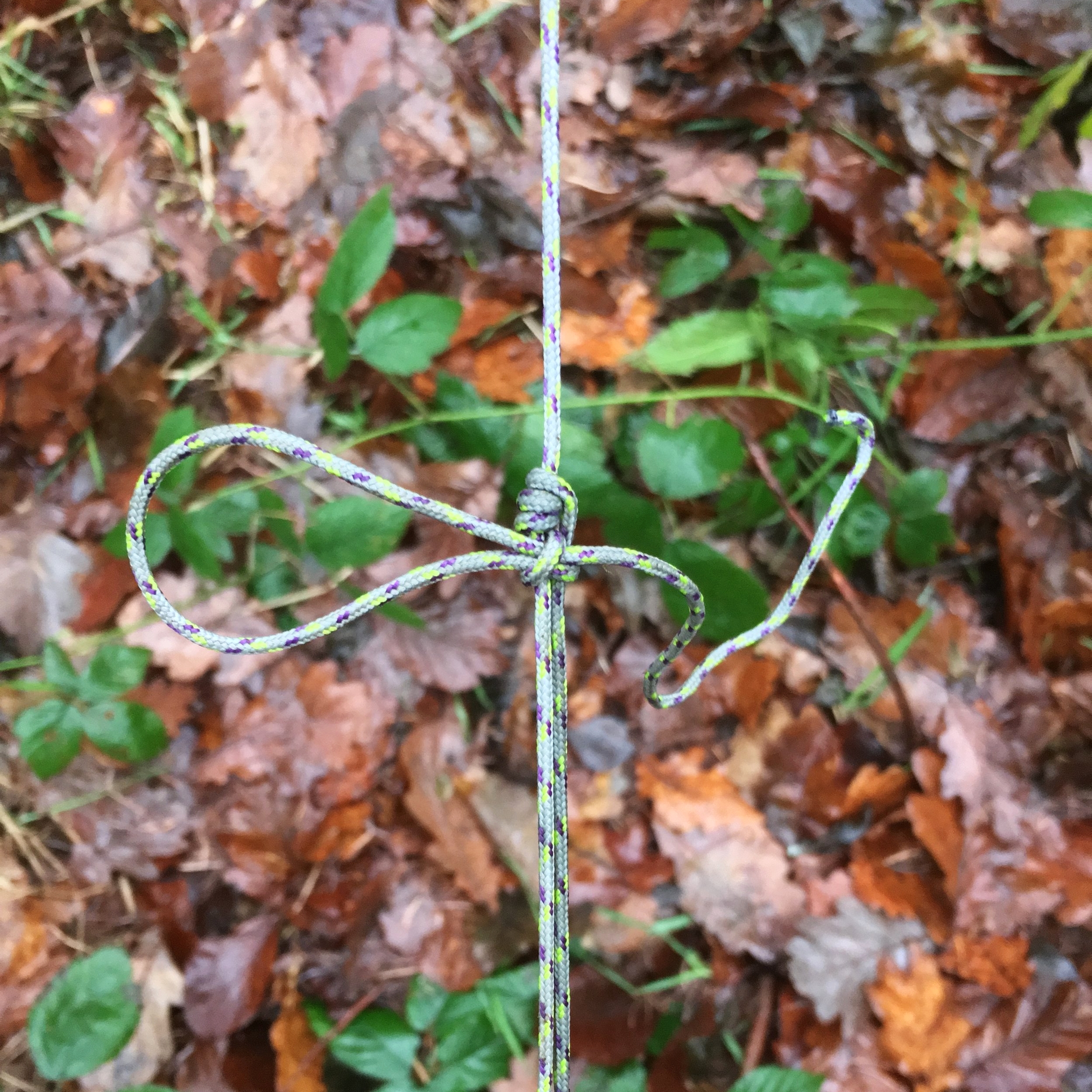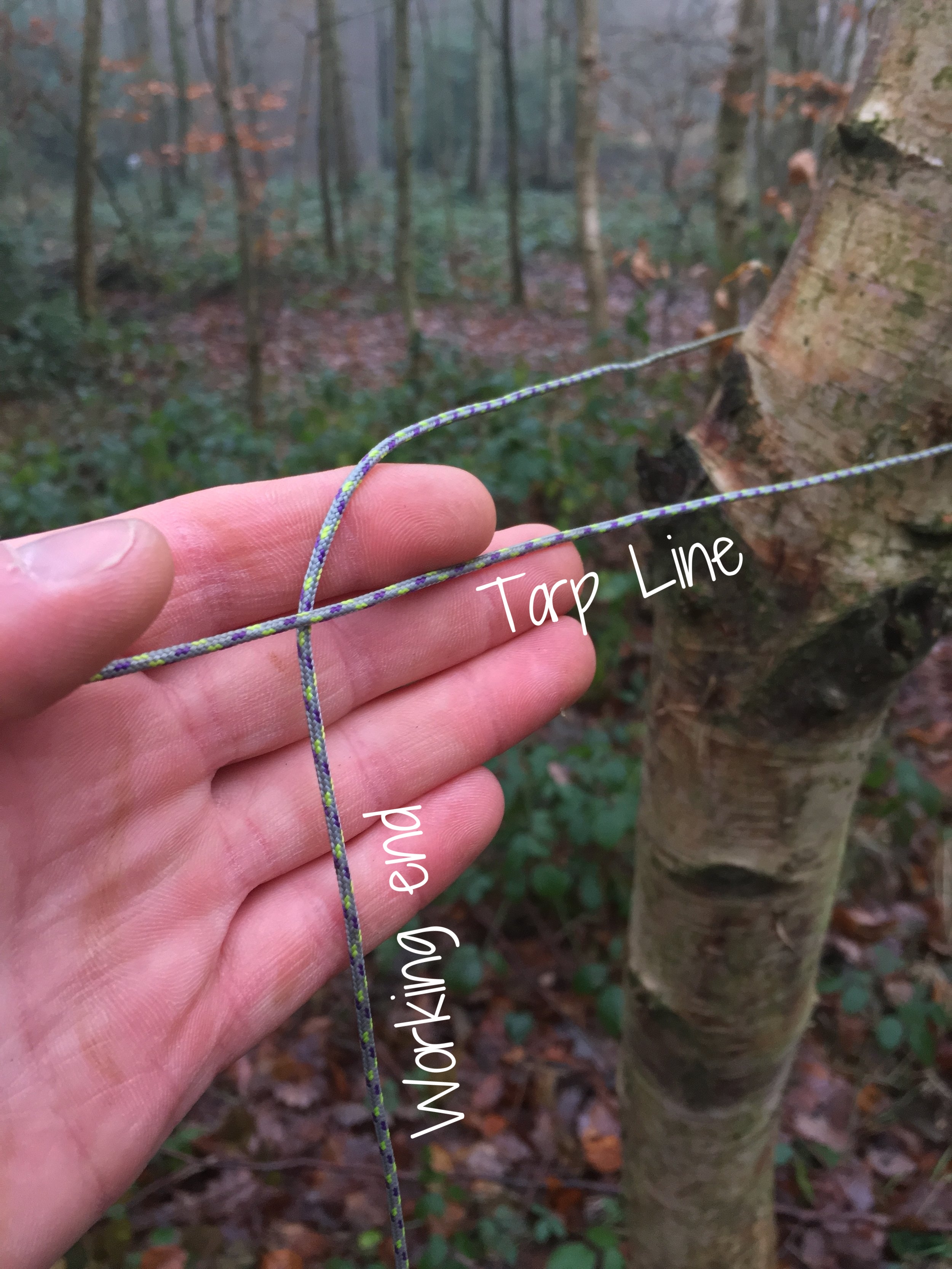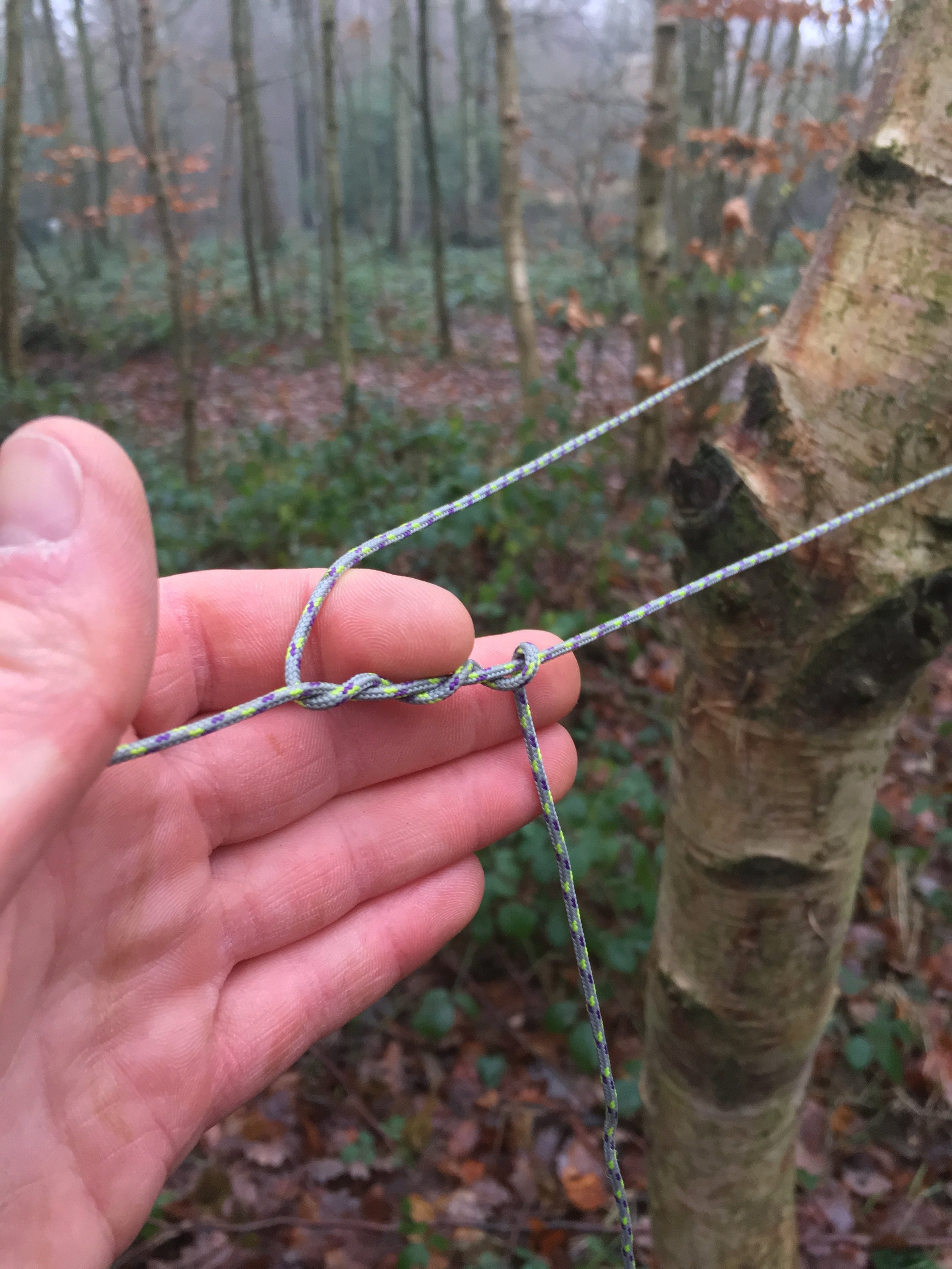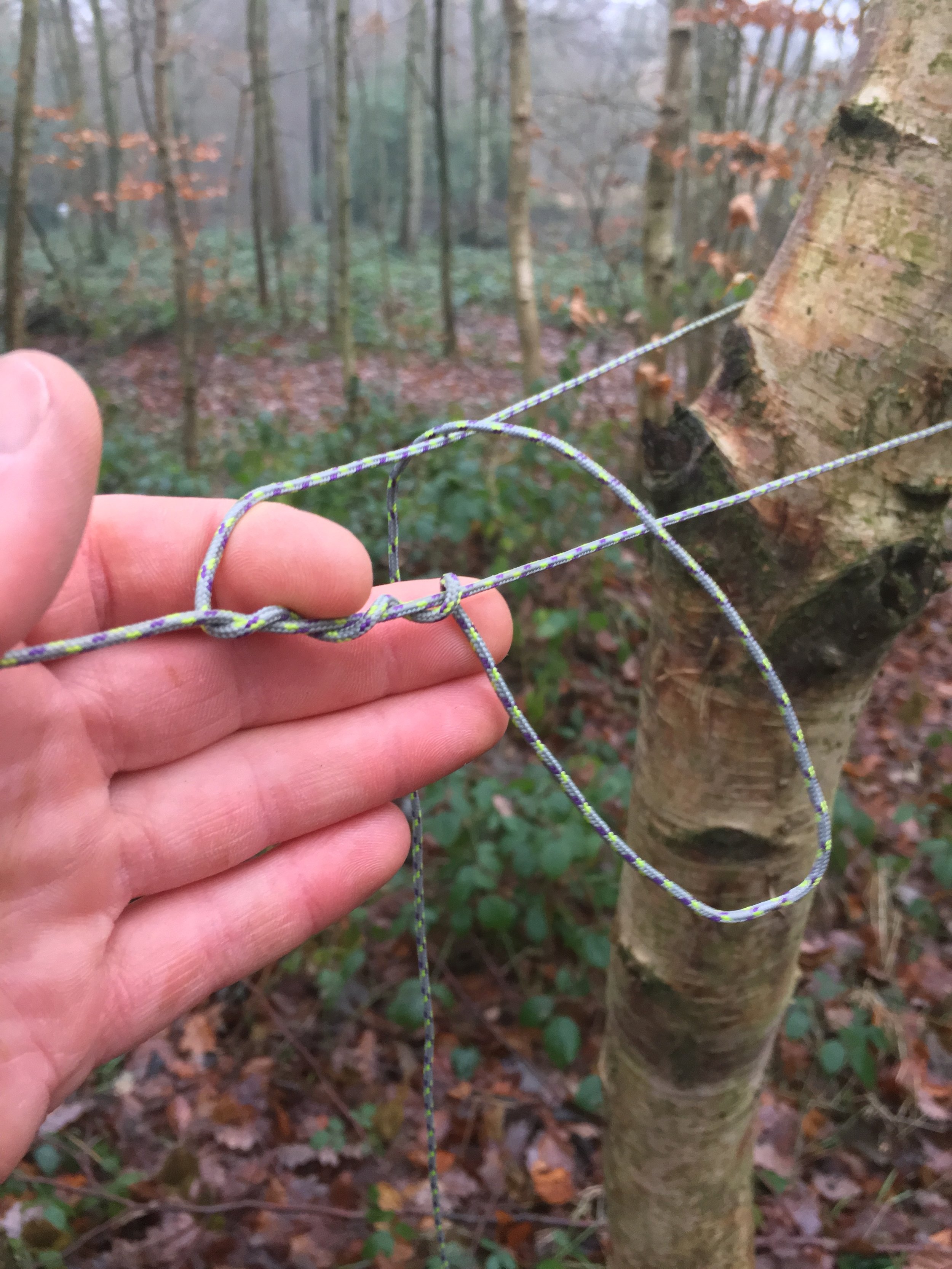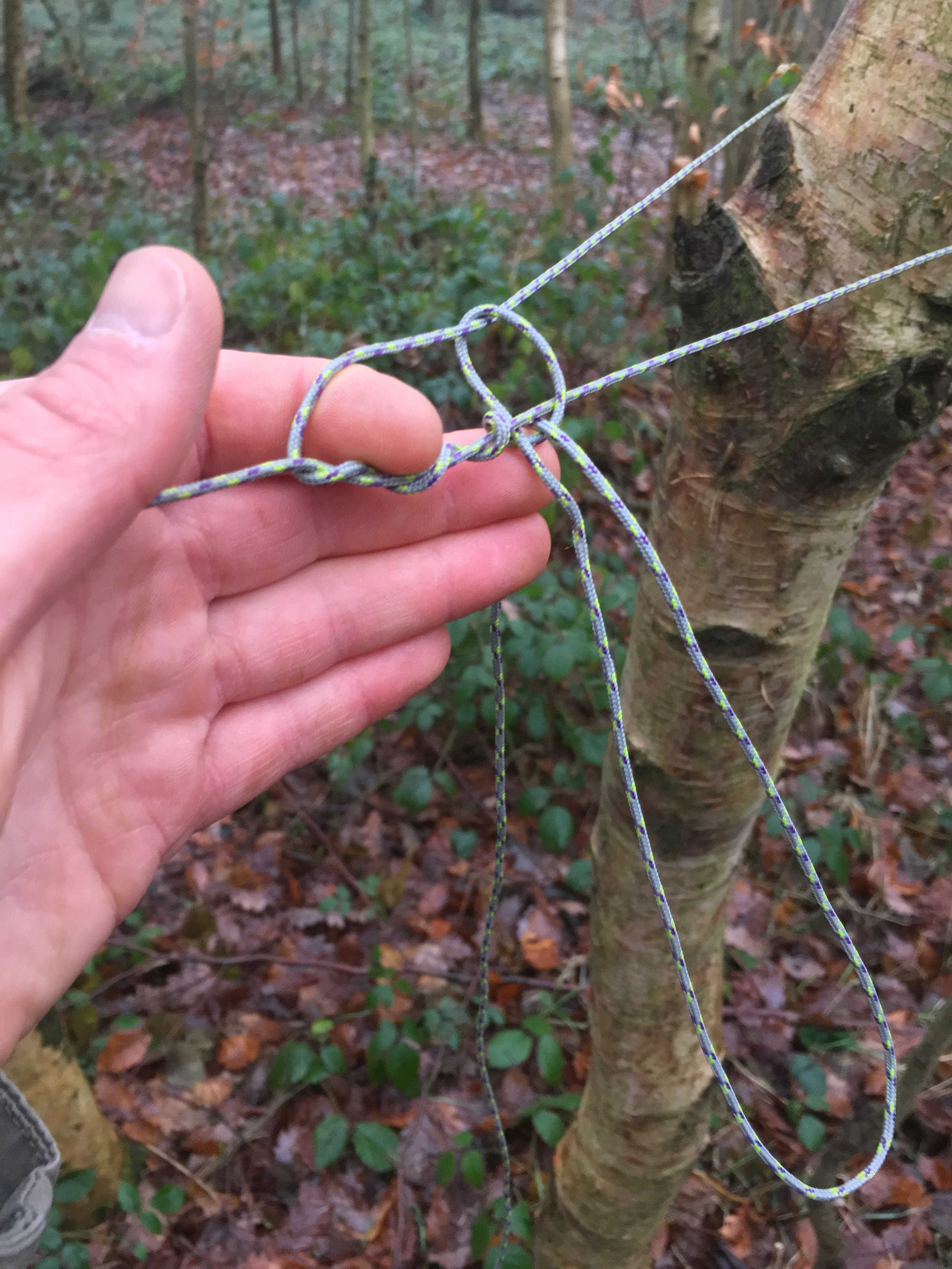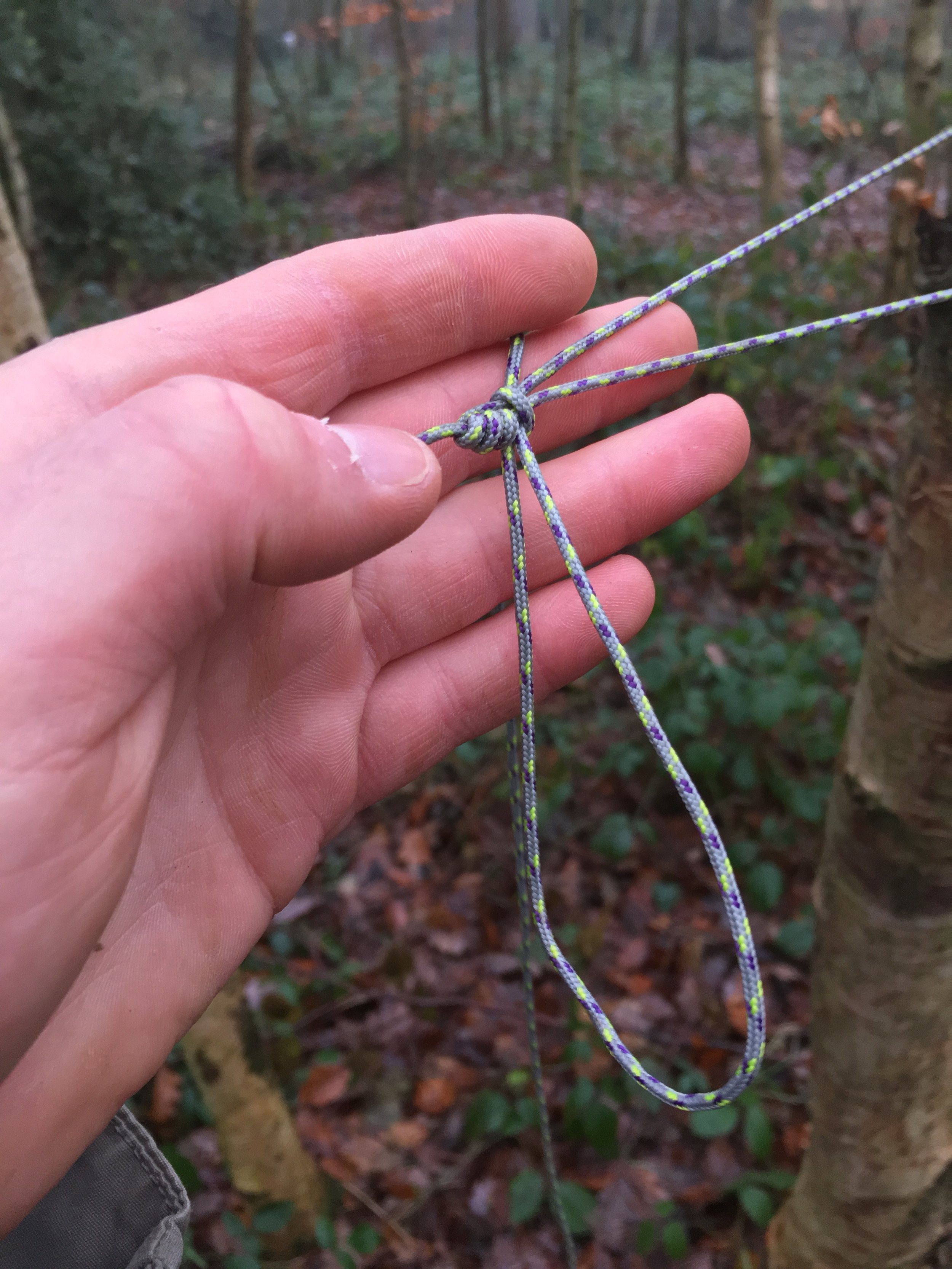The Adjustable (slippery) Guyline Hitch, stay flexible!
Jamie Dakota
After my last article, an Ode to carrying a tarp as it was, I'm planning a couple of blog posts featuring some simple tips for setting up a tarp quickly and efficiently. I strongly believe in Kochanski's Law "the more you know, the less you carry" and knots exemplify this perfectly. There are plenty of gadgets and mechanisms on the market that will claim to replace knot's in your camping systems, and therefore the hassle of having to learn them. However useful these gadgets may appear to be they will never be a versatile as a good knowledge of knots, and knowledge can't broken or misplaced, and takes up zero space in your kit. Knowledge can be lost though, so learning and practice will keep these skills at your fingertips when you need them. In truth I use perhaps just a handful of knots on a daily basis in the woods, with more reserved in mind for specialist tasks.
Knots can seem daunting, especially when you're new to them, and knowing which ones will be useful to you when faced with a bookful is enough to put anyone off; so in this and the next couple of articles I'll highlight the knots I use most often. Here we'll look at the Adjustable Guyline Hitch.
The Adjustable Guyline Hitch is used to tension a rope after the knot is tied, making it very useful in bushcraft for pulling tight your tarp. Tarps need to be tightly strung, and correctly angled to allow rain to run cleanly off without sagging into puddles above your head. This hitch gives you the opportunity for fine tuning your tarp arrangement without having to undo all your knots.
It's simple to tie once learned, and can even be set with gloves or mitten in cold weather, but for now let's look at how to tie the adjustable guyline hitch for everyday use.
With the knot made you can now pull on the guyline between the knot and the tree to take up the tension and pull your tarp tight. Then by holding the knot between your fingers you can push it towards to tarp and the torsion generated by the knot will hold it where you let go.
Here you can see just how smooth you can get your shelter with a tensioning knot. Aim is also important however, note my guyline is aimed directly at the point where my tarp attaches to the ridgeline.
As a sidenote, this knot is sometimes wrongly called the 'taut line hitch' and may have its origins here; however the taut line hitch is inferior in this regard as often fails to generate the required friction in made synthetic rope materials to hold fast. Interestingly the taut line hitch seems to have been introduced to the scouting movement by mistake, with a mislabelled Midshipman's Knot in the scouting handbook in 1948. The very useful Midshipman's knot was subsequently left out in favour of the taut line hitch.
More on the Midshipman's Knot next time...
I hope you find this article useful, it's my first at writing about knots. Let me know what you think in the comments below. Do you use any other knots to achieve the same results?
Jamie Dakota
If you'd like to upgrade the cord on your tarps I've created a product specifically for this in our shop:
These superior cords have been specially selected and trialled for years by JD at Howl. 100% polyester they out perform all other options in the forest.
The guy-lines are available in two set: Standard and Pro. These flexible setups allow for extra range, as well as the option to leave your ridge-line at home and use a lightweight setup if you need.
Standard:
1x 10m long 4mm ridgeline
5x 4m long 2.5mm guylines
2x 200mm long 2mm loops for tensioning prusiks
weight: 190grams approx.
Pro:
1x 10m long 4mm ridgeline
1x 10m long 2.5mm line for a lightweight ridgeline option or use as an under-tarp gear line
6x 4m long 2.5mm guylines
2x 200mm long reflective red loops for tensioning prusiks
